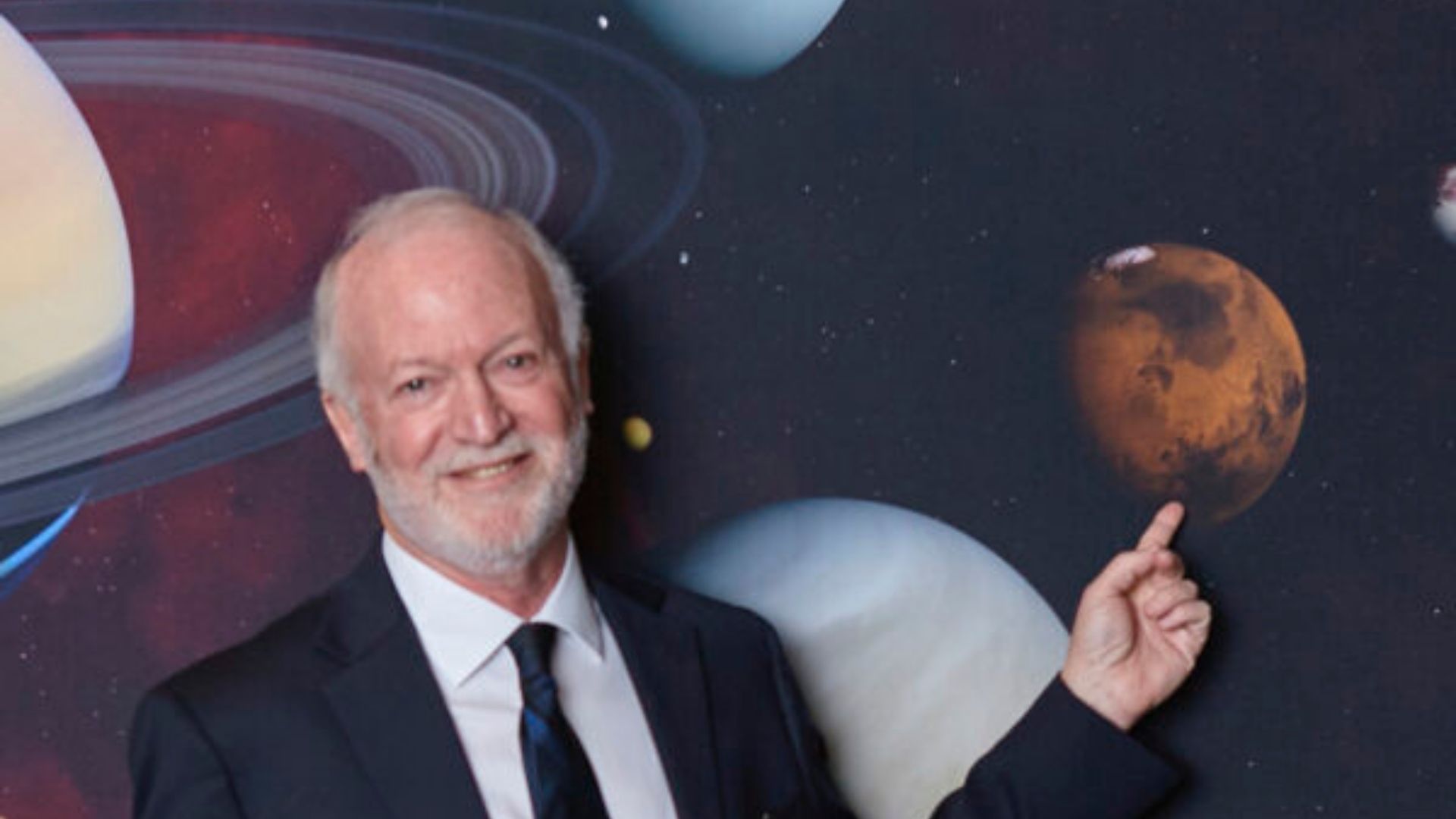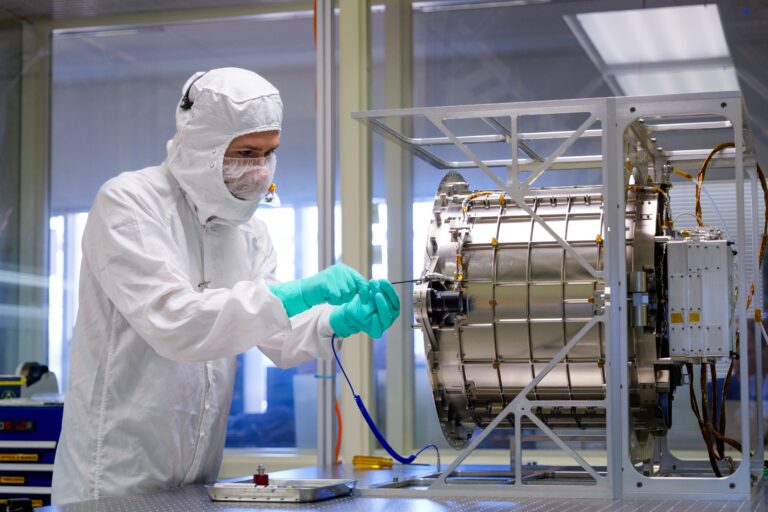
If a journey of a thousand miles starts with a single step, as a Chinese proverb suggests, how then does a voyage of 442 million miles from Earth to Mars begin?
For Bruce Jakosky, the associate director for science at the Laboratory for Atmospheric and Space Physics (LASP) at the University of Colorado Boulder, the mission concept to study Mars’ atmosphere commenced with an hour-long phone call. Jakosky, who’s also a professor in the Department of Geological Sciences, vividly recalls the day during the summer of 2003 when he chatted with Janet Luhmann and Bob Lin, two colleagues at the University of California (UC) Berkeley’s Space Sciences Laboratory. The trio discussed the compelling need for a mission to explore Mars’ climate history to better understand how the planet had shifted from a warmer, wetter planet in the distant past to the cold, barren place it is today. That single phone call was the start of a novel journey, brilliantly led by Jakosky, to send the Mars Atmosphere and Volatile EvolutioN (MAVEN) mission to the Red Planet.
The word “maven” means an expert or connoisseur, an appellation that also appropriately describes Jakosky and his knowledge of—and affinity for—the planet Mars. He’s been exploring the Red Planet since the 1970s, when he analyzed data from the Viking missions as an undergraduate. In 1982 he earned a Ph.D. at Caltech, where he studied the seasonal behavior of water vapor in the Martian atmosphere, and he has continued to study, speak, and teach about Mars ever since.
Given his strong interest in our neighboring planet, it’s hardly surprising that Jakosky quickly became the MAVEN principal investigator (PI). In partnership with Lockheed Martin, Goddard Spaceflight Center, and numerous other Mars researchers, he led the team that developed the concept and ultimately built, launched, and commanded the MAVEN mission to Mars. The prime mission lasted only one year, long enough to observe a single season of Mars’ two-year orbit around the Sun. The mission was so successful that it was extended, then extended again, and again, and again, and it continues to operate just as productively today, seven years after first reaching the Red Planet.
This year, with the mission’s payload of state-of-the-art instruments still making groundbreaking discoveries, Jakosky decided to step down as the mission’s PI to focus more of his time on scientific research. As Jakosky hands over the mission management duties to MAVEN’s new PI, UC Berkeley’s Shannon Curry, his contributions cannot be overstated.
Under Jakosky’s expert guidance and leadership, the project evolved from a short conversation to a spacecraft that has successfully orbited within the harsh environment of Mars’ atmosphere for seven years while maintaining fully functioning instrumentation. These have produced a goldmine of new data about the planet that has resulted in more than 700 scientific publications. His dedication to the training of the next generation of scientists has resulted in the MAVEN team endorsing nearly two dozen Ph.D. dissertations. Ultimately, MAVEN has exceeded all expectations in fulfilling its scientific goals, including understanding the mechanisms by which Mars is losing volatiles (such as carbon dioxide, nitrogen, and water) through escape to space, as well as gaining insight into the long-term history of Mars’ atmosphere and climate.
It is no small task to turn an idea into a functional space flight mission to another planet. A mission like MAVEN involves hundreds of people: scientists, engineers, technicians, computer scientists, managers, accountants, and many more support staff. It is truly a team effort and a team success. But that success requires the right person at the helm to organize the effort, ride through the crises that inevitably arise, and recognize when to listen and when to command, all the while keeping the end scientific goals in sight and keeping up morale with a sense of humor.
Bruce Jakosky has done an amazing job leading MAVEN, and as a Mars ‘maven’ himself, he has simultaneously made significant scientific contributions to the NASA planetary community and the public. His career is living proof that it’s not the length of the journey that matters; it’s the first, bold step forward that really counts.
Written by Frank Eparvier, MAVEN co-investigator and LASP’s instrument scientist on the MAVEN mission’s Extreme Ultraviolet Monitor (EUV).


